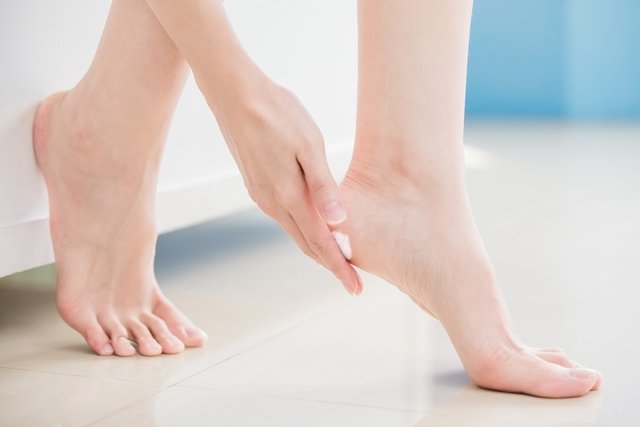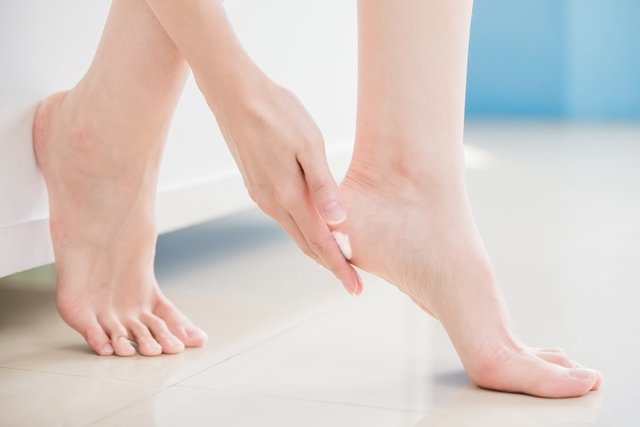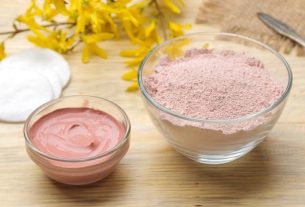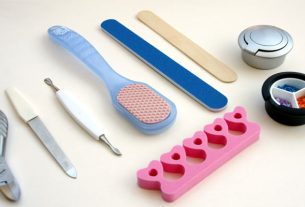Remedies for calluses are mainly ointments, gels or liquid solutions, to be applied directly to the skin with the callus, as they help to promote deep hydration of the skin, soften and promote peeling of the skin, facilitating the removal of the callus.
Calluses are a hard region that forms in the upper layer of the skin, which becomes thick, rigid and thick, appearing as a response to the constant friction to which this region is subjected. Although calluses are most common on the feet, they can also appear on other areas of the body such as hands or elbows, or in other areas exposed to repeated friction.
Remedies for calluses can be purchased at pharmacies or drugstores, and should be used under the guidance of a dermatologist or podiatrist, as they can cause side effects such as skin irritation, formation of ulcers or wounds in the treated area.

Corn ointments
Callus ointments help to hydrate the skin or facilitate skin peeling and callus removal, the main ones being:
1. Ureadin UltraK
Ureadin UltraK anti-roughness cream is an ointment that promotes intense hydration of the skin, being recommended for calluses or intense dryness on the feet, hands, elbows or knees, for example.
This ointment has salicylic acid and provitamin B5 in its composition, which helps retain water in the skin, reduces the thickness of the callus, and promotes exfoliation of rough and rough areas of the skin.
How to use: Apply Ureadin UltraK anti-roughness cream to the callus and the entire surrounding region, after washing and drying the skin, 2 to 3 times a day.
2. Uread 20%
Ureadin 20% is a cream indicated to soften the thick, rigid and thick skin of the callus, promote deeper and prolonged hydration of dry and rough skin, and facilitate the removal of calluses, due to a higher concentration of urea in its composition. .
How to use: apply the cream evenly over the area to be treated, 2 to 3 times a day. The treatment must be repeated daily, until the callus begins to come off.
3. Calotrat Plantar
Calotrat Plantar is an ointment that contains salicylic acid 200 mg/g in its composition, indicated for relieving pain and removing corns or calluses from the feet, as it has a keratolytic action, which facilitates skin peeling and callus removal.
This ointment should not be used by children, pregnant or breastfeeding women, or by people with diabetes, circulatory problems or allergies to the components of the formula.
How to use: wash and dry your feet well, then apply the ointment to the callus, once a day, preferably at night when you go to bed, and cover with tape, removing it the next morning.
4. A Curitybina
Curitybina is an ointment that contains 280 mg/d of salicylic acid in its composition, which facilitates skin peeling, which helps to remove calluses and warts.
How to use: wash and dry the area to be treated, then apply the ointment. The treatment must be repeated 1 to 2 times a day, for 14 days of treatment.
Callus gel
Callus gels help hydrate and reduce the appearance of rough skin, the main ones being:
1. Ureadin Podos Gel
Ureadin Podos Moisturizing Gel Oil contains allantoin, panthenol and Shea butter, which help to promote intense hydration of the skin of the feet, as well as lactic acid and Bacillus ferment, which help to reduce the thickness of skin with calluses, roughness or roughness of the feet. feet.
How to use: Apply Ureadin Podos Gel to clean, dry feet, especially in areas with calluses or roughness, 1 to 2 times a day.
2. Granado Callus Protective Gel
Granado Callus Protective Gel helps protect skin with calluses, such as hands, feet, elbows or knees, for example, promoting hydration and lubrication of the skin, in addition to preventing the callus from rubbing against shoes or clothes, for example.
How to use: apply the gel to the skin with callus, whenever necessary, before friction occurs, such as before putting on shoes, clothes or exercising at the gym, for example.
Topical solution for calluses
Topical solutions for calluses, such as Kalonat, Kalostop, Kalloplast, Duofilm or Verrux, are liquids for external use to be applied directly to the callus, which contain salicylic acid and lactic acid in their composition, which helps to relieve pain and remove calluses. , calluses and warts.
These topical solutions can be used by adults, according to medical advice, and are contraindicated for pregnant or breastfeeding women and for people with diabetes, circulatory problems, or allergies to the components of the formula.
Topical solutions for calluses should not be ingested orally and should not be applied close to the eyes or on mucous membranes and healthy skin.
How to use: wash and dry the area to be treated. Next, apply solid petroleum jelly to the skin around the callus to protect it, or place a tape or band-aid around the callus, with a central hole the size of the callus.
Apply a layer of Calotrat to the callus and wait for it to dry. Reapply 3 more times, always letting it dry before reapplication. This procedure should only be done once a day. Treatment must be maintained until the callus begins to come off.
Eliminate calluses with a warm water bath and pumice stone
Bathing in warm water is a technique widely used to soften the thick, rigid skin of calluses, which makes them easier to remove. To do this, you need to place the area with the callus in warm water for 10 to 20 minutes, so that the skin softens and becomes softer. After this time, you should dry the area with a towel and use a pumice stone on the area to remove dead skin. See other ways to eliminate calluses.
Despite the habit of cutting the callus with sharp objects such as a blade or scissors, this is not recommended due to the risk of causing cuts or wounds. In these cases, when removal with a pumice stone is not sufficient, it is recommended to consult a dermatologist or podiatrist, who will assess the situation and proceed with the extraction of the callus.
Furthermore, the ideal is to prevent the appearance of calluses, and to do this you must ensure that the most problematic areas remain well hydrated, avoiding tight, uncomfortable and hard shoes, for example.

Sign up for our newsletter and stay up to date with exclusive news
that can transform your routine!
Warning: Undefined array key "title" in /home/storelat/public_html/wp-content/plugins/link-whisper-premium/templates/frontend/related-posts.php on line 12
Warning: Undefined array key "title_tag" in /home/storelat/public_html/wp-content/plugins/link-whisper-premium/templates/frontend/related-posts.php on line 13




